The M16 is the longest-serving standard rifle of the U.S Military and defense forces. A design that revolutionized the assault rifle industry and delivered a platform for the accessorization of rifles with modern tech gadgets.

Here we’ll be learning more about this legendary rifle, its history, uses, and how it changed the modern battlefield.
An Overview of M16A1
The U.S military’s engagements weren’t over after the conclusion of World War II. The United States almost instantly engaged in the Korean War and then into the Vietnam War. This war saw the development of many modern weapons. Especially due to the unique and deadly terrain.
The existing standard issue rifles like the M1 Garand and M14 were proving heavy and cumbersome to handle in thick bushy jungles. The troops needed a lighter weapon with an intermediate high velocity cartridge to carry more ammo.
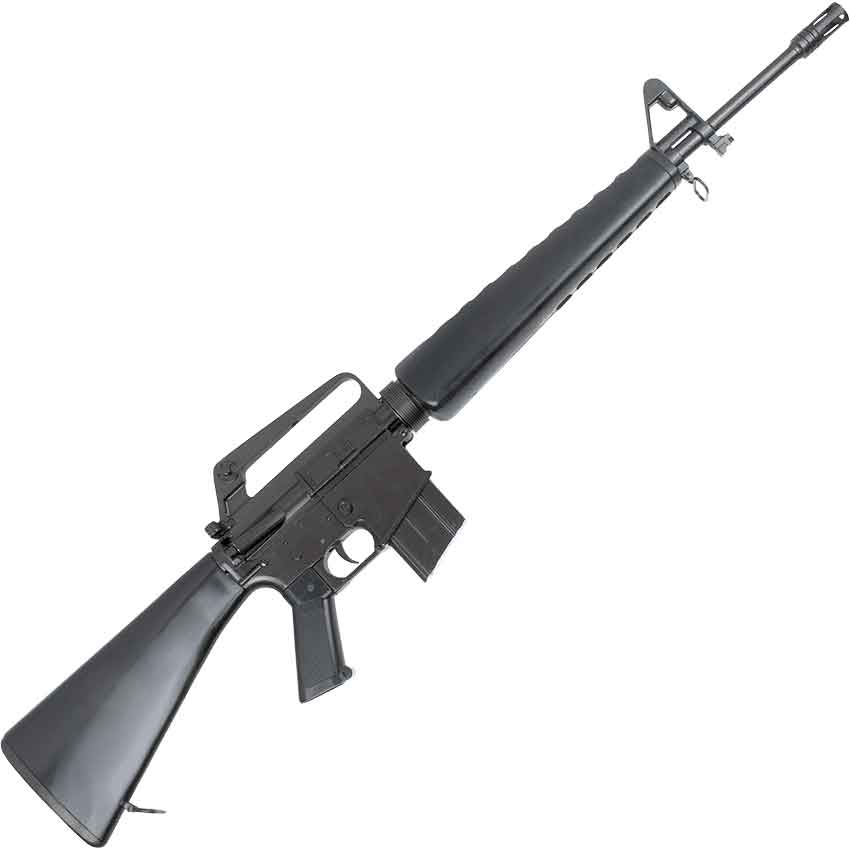
Long story short, the M16 was first adopted by the U.S Airforce in 1960 and by the U.S Military in some capacity by 1963. The model which the military adopted was the XM16E1 as it had the forward assist pertaining to the military’s requirements. Whereas the Air Force kept the original model with the bolt assist.
In 1968, the XM16E1 model was standardized as the M16A1 and adopted as the standard issue rifle of the U.S Military. The M16A1 featured a forward assist, chrome-plated bore, and a 30 round magazine. Further refinements of this design from time to time resulted in the M16A2, M16A3, M16A4, and other models.
A further outgrowth of the M16’s design resulted in the development of the M4 carbine. Which is primarily a shortened version of the M16 with a burst fire mode and certain other improvements.
The M16A1 and its variants are among the most widely used standard and non-standard issue rifles by many state militaries around the world. More than 10 million M16s have been produced according to a low estimate. Which makes it the third most produced firearm in the world. Along with being the most mass produced rifle in the 5.56×45 NATO caliber.
Oh, and by the way, the A1 in M16A1 stands for Alteration 1.
What M16A1 Does Best
The M16A1 has been the longest serving standard issue rifle for the American G.I. So it stands to reason: what it does best is combat. This rifle was designed for frontline troops as a lightweight (under seven or eight pounds) and easy to maneuver rifle that can hold more rounds.
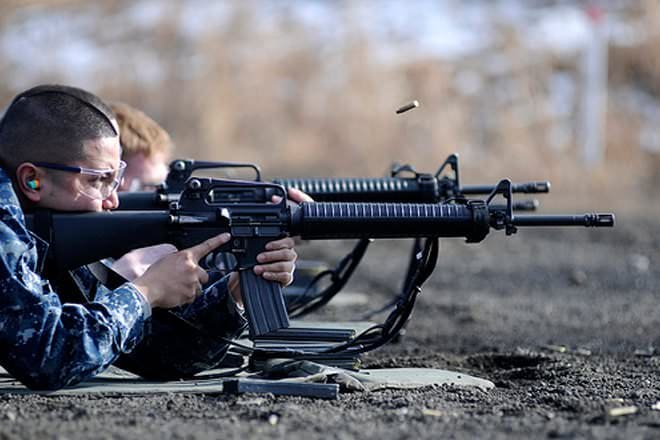
Additionally, the 5.56×45 NATO ammunition is an intermediate cartridge that takes up less space and weight compared to the earlier 7.62 calibers. The 5.56 bullet can stay supersonic beyond a distance of 1,000 yards. Tests revealed that an M16A1 offered 100% accuracy up to 300 meters, 87% accuracy up to 500 meters, and a 73% accuracy at 600 meters.
Successive versions like the A2, A3, and A4 further improved this accuracy. The modern M16 or M4 we see today can accurately hit targets up to 800 meters (875 yards) with a good optic. Even beyond with the right optics and ammo. As it has a maximum firing range of 3,600 meters (3,937 yards).
As far as civilians are concerned, the ownership of an M16 rifle is prohibited. Since it is a full-auto weapon and banned for the civilian market after the 1986 ban. However, you can buy a pre-ban M16 if your state laws allow ownership and you have tens of thousands of dollars to spare.
The civilian version of the M16 is the AR-15. In fact, the M16 design came about a decade later after the AR platform. Basically, the difference between a modern M16 and an AR-15 is the full-auto firing mode. But since we’re talking about the M16A1 which is a full-auto weapon. It’s primarily a combat and tactical weapon.
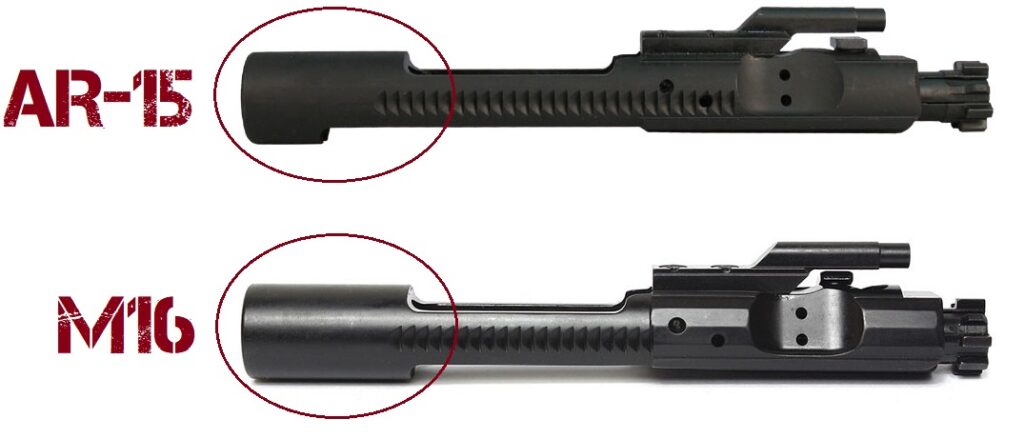
Where an M16A1 Falls Short
The first M16 rifle models were a disappointment to some extent for the military. The M16 was issued to troops without proper training or cleaning kits. Plus, the tested and approved ammo powder was different from what was issued. Additionally, a forward assist was needed to overcome feeding issues. All these problems were resolved in the M16A1.
This rifle features a direct impingement gas system. Where the expanding gasses are directed back to the chamber to push the bolt rearward. While this reduces the need for a complex piston mechanism. This system makes the chamber prone to a lot of grime and residue from the burning powder. Hence a need for cleaning at regular intervals.
This gas system can be seen as a significant contributor to feeding issues. This is why a forward assist button was added to the M16A1.
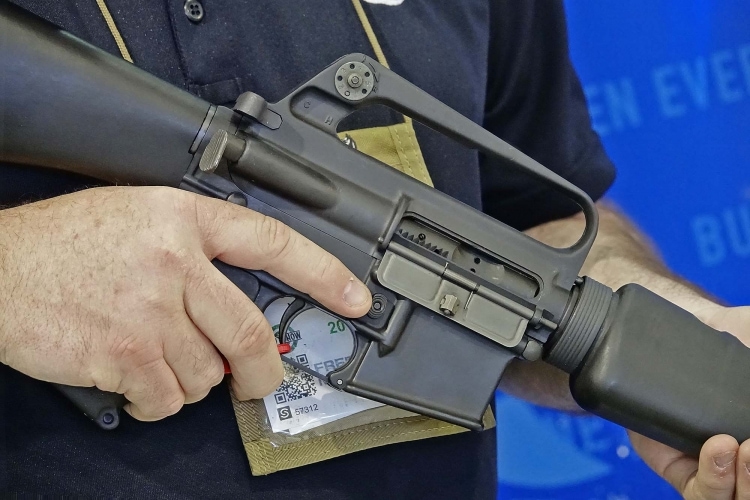
This rifle was used from 1967 to 1982 by the U.S Military. It was widely appreciated by soldiers and proved to be a very effective weapon in combat. However, with a slight catch. The M16A1 was designed to be lightweight. Due to this, the user faced some controllability issues during full-auto fire.
Another point to look out for is the effective firing range. The M16A1 showed a 100% accuracy in tests for targets up to a distance of 300 meters. However, the accuracy results begin to diminish significantly after 600 meters.
As far as today’s market is concerned. An original M16A1 rifle will cost you a lot of money. Apart from being exceptionally rare to find one for sale.
How to Take Advantage of an M16A1
Many manufacturers sell M16 replicas these days. As I already mentioned, the basic difference between an M16 and a civilian AR-15 is the full-auto firing capability. You’ll find many M16’s or M16 lower receivers on market shelves that feature a facade marking for a full-auto selection for the safety switch. Which is obviously not selectable.
It is also important to know that you can easily find M16 full auto-compatible bolt carrier groups on the market. Using them in your semi-auto AR-15 is completely legal. That’s because, in order to make your AR-15 full auto, you need a full-auto compatible trigger assembly.

Luckily if you happen to have a full-auto M16, it is not very hard to find replacement parts like the M16 trigger, magazine, or even A1 style carry handles.
The A1 is the enhanced version of the M16 which allows you to have an interchangeable M16A1 handguard and also the option to switch your stock. If you need a fully customized rifle, you can also opt for an M16A1 parts kit and assemble it on your own.
The design of the M16A1 runs parallel to the AR-15. So there’s a wide range of aftermarket accessories and build options to choose from. You can find M16A1 upper/lower receivers and parts kits rather than building the original traditional model. You can customize it and create an M16A1 rifle that can be highly accessorized like the modern AR-15.
Conclusion
The M16A1 was the first refinement of the M16 rifle. It became the longest-serving standard rifle of the U.S Military and revolutionized the world of rifles. It was the answer to the rising popularity of the AK-47.
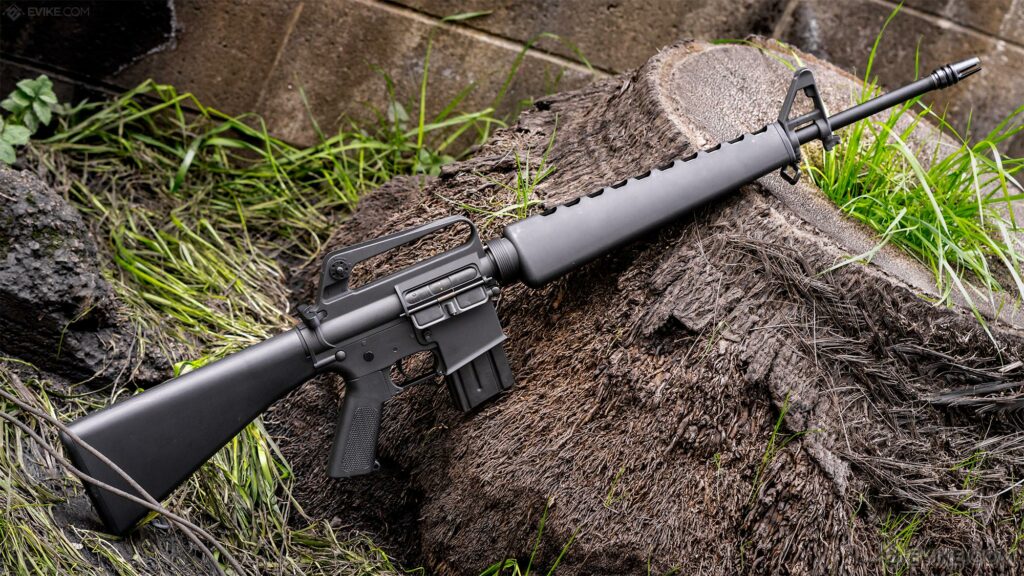
The M16A1 was further refined and transformed into the M4 carbine. While M16 rifles are banned for civilian markets (depending upon the state) due to their full-auto capability. There’s still a lot of accessories and parts options to choose from.


